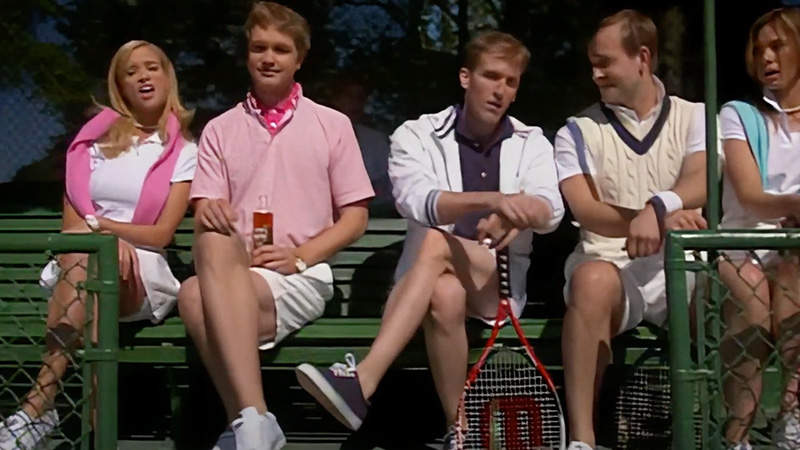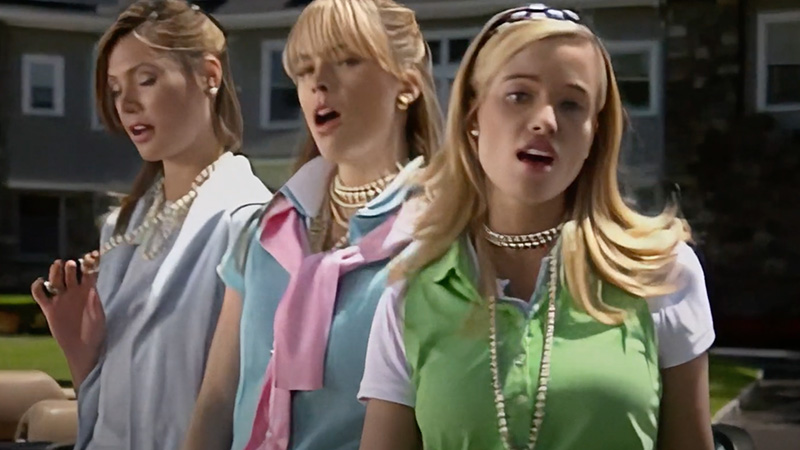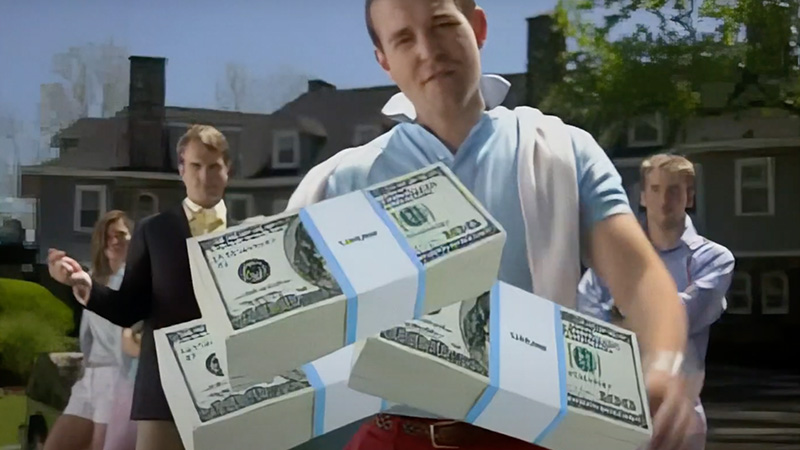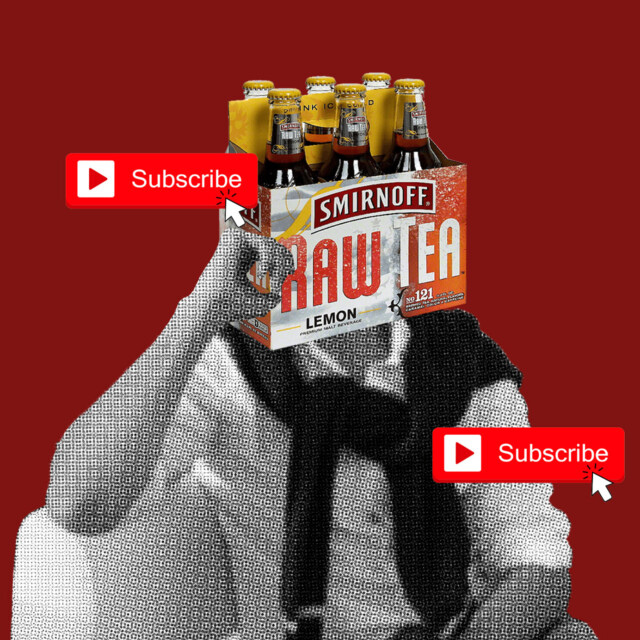This article is a part of our Matters of Taste series, essays from our favorite writers on the artifacts and abstractions they hold most dear in their drinking lives.
The year is 2006 and I am trying to watch a video on my parents’ Dell desktop in suburban New Jersey. The dial-up connection struggles to maintain a buffer, so I have to keep pausing it. But my friend sent me this video over AOL Instant Messenger and insisted I drop everything I was doing to watch it, and that’s what I’m going to do, dammit. The buffer bar inches across the bottom of the screen. The house is quiet. Enough of the video finally crawls over the wire that I figure I’ll be able to watch it without interruption. I close the double doors, sealing myself in the computer room, and turn the volume down on the speakers just in case this is an elaborate prank. I press play and a man’s nasally voice rings out almost immediately.
“P-Unit forever!”
***
At its best, advertising reflects the cultural mores of the society it targets. Coca-Cola’s “Crying Indian.” Apple’s “1984.” the California Milk Processor Board’s “Got Milk.” The American ad pantheon is full of titanic spots that capture the anxieties and aspirations of their respective eras. That the ads age poorly is not a prerequisite, but all too often that’s how it goes: “Crying Indian,” for example, has come to be understood as a brazenly racist early foray into corporate greenwashing. Still, as far as I’m concerned, commercials must be evaluated in their contemporary contexts when considering their place in the canon. Frame-for-frame, there are few texts richer for deciphering the liminal milieu of the newly online aughts than “Tea Partay,” a 2006 spoof-rap spot from Smirnoff that so perfectly met its moment that it went viral before anybody really understood what “going viral” even was. It’s a Bro-setta Stone, “Take Ivy” meets fake IDs, flickering class consciousness preserved forever in the post-9/11, pre-recession digital amber. I don’t think there’s been a month in the past 16 years that I haven’t rewatched it at least once.

For the uninitiated, some brief history is in order. The dawn of the internet’s present era — what we’ve now come to understand as Web 2.0, a media-enriched upgrade from the chatrooms and message boards of the ‘90s — is inexact, but a key moment in its formation came with the launch of YouTube in 2005. The platform’s stability, speed, and usability changed everything, democratizing and decentralizing video-sharing like never before. Advertising was not exempt, so when Smirnoff went looking for a splashy idea to launch its new Raw Tea flavored malt beverage line in 2006, it makes sense that its ad agency, Bartle Bogle Hegarty (BBH), pitched an internet video. But as Smirnoff and BBH quickly learned, YouTube’s rising popularity was a double-edged sword: It made it easier to host your videos online, but much harder to stop other people from hosting your videos online, too. “[W]e wanted to control the distribution, but it somehow leaked out onto YouTube,” the video’s creator, Kevin Roddy, told the Ivy Style blog in a 2010 interview. “Somebody posted it, and to this day I don’t know who it was, and it just exploded.” This was the infancy of viral marketing, with all the unsophisticated execution to prove it. Smirnoff was only rolling out Raw Tea in the Northeast market, but YouTube was everywhere; retailers across the country scrambled to line up product to meet demand, but to no avail. The success of “Tea Partay” came as such a surprise to Smirnoff and BBH New York, in fact, that the corresponding website, TeaPartay.com, wasn’t even live when the video started taking off. It was a simpler time, man.
Why “Tea Partay” blew up back then is easy enough to figure out. The premise was instantly comprehensible to older millennials who were just then developing their adolescent pop-culture palates. Mainstream touchstones like the film “Malibu’s Most Wanted” (2003), the du-rag scene in “I Am Charlotte Simmons” by Tom Wolfe (2004), and Saturday Night Live’s “Lazy Sunday” sketch (2005) didn’t form a cohesive comedic tradition per se, but they helped set a cultural precedent for media that mapped the vibrant, ascendant, and mostly Black aesthetics of hip-hop onto gawkish stereotypes of middle-class, suburban, white America.
By the time Raw Tea rolled around in 2006, the dynamic was primed for commercial purposes. The irony of Sack Lodge lookalikes (“Wedding Crashers” came out the year prior) rapping about East Coast resort towns while women in pastels and pearls danced in gawkish approximation of actual video vixens was an instant hit. “It hit a million people in three or four days, which was massive at the time,” Roddy told Ivy Style. The fact that the Smirnoff spot was directed by Julien Christian Lutz, who had already cut non-spoofs for G-Unit and would go on to do videos for Kanye West, Mobb Deep, and Nicki Minaj, made “Tea Partay” look and feel even more like the genuine article in the mid-aughts. The dulcet tones of the back-up singers, the deliberately cringe-y verses about Docksiders and insider trading, the lush backdrops — I can’t argue that the video has held up, and won’t. But that was all it took to go viral back then. Like I said, it was a simpler time. Obviously.
Why I continue to watch this stupid viral video from 16 years ago is probably a little less obvious. I’ve never drank a Smirnoff Raw Tea, or even seen one in person. (I think the line got discontinued somewhere along the way, which like, if there was ever a time for Smirnoff to bring it back, it’s now.) I don’t listen to much actual rap, and I soured on Lonely Island-style spoof rap after hearing “I’m on a boat!” eleventy bajillion times in a single calendar year back in 2009. The spot hasn’t aged as poorly as Coke’s “Crying Indian,” but the racial juxtaposition that underpins the central joke looks a lot uglier a decade and a half later. (“[T]ea can be the Nantucket world, for lack of a better term, and alcohol can be this urban world” is apparently how the idea came to the Greenwich, Conn.-born creator of the spot, Roddy told Ivy Style in 2010. Eesh!) It’s also just objectively not that good. “Tea Partay” is like an Onion article that could’ve just been a headline: Once you get the gag, there’s not a whole lot more to it.

I know all this academically, yet “Tea Partay” holds a special place in my personal viral media canon even so. It’s a soundtrack to my own aughts coming-of-age spent navigating a bunch of “betweens” — landlines and cellphones, suburbia and farmland, husky and full-blown fat. When I first watched “Tea Partay,” I was between high school and college. The former was a leafy day school in northern New Jersey with nationally ranked hockey and lacrosse teams. For the latter, I split time between a New England liberal arts school with its own ski mountain, and a mid-Atlantic university that makes not one but several appearances in “The Preppy Handbook.” I fit in fine socially, but felt insecure socioeconomically. In other words, at the moment of the ad’s initial virality, I was struggling to find my place within the culture that it lampooned.
They say familiarity breeds contempt; I don’t think “Tea Partay” was particularly contemptuous toward its Vineyard Vines-clad subjects, but it was one of the first pieces of media I ever came across that gestured in that direction. As I outgrew my insecurities about my relative lack of pedigree, and embraced life beyond the enclaves of privilege from whence I’d come, the video became a sort of digital comfort food. It’s not that I think “Tea Party” is art, or that it meaningfully sharpened my politics. The video does not transcend; musical schtick about inherited wealth in the service of selling Smirnoff has only so much dimension, and we’ve definitely covered it. But that’s what I love the most about it, I think.

“Tea Partay” is an artifact of its era, a media morsel that could only have come from that electrifying moment between offline and online, when your friends sent you viral videos on AIM that barely buffered on your parents’ dial-up connection, and massive brands still misunderstood the internet enough to occasionally spin gold. P-Unit forever, baby.
